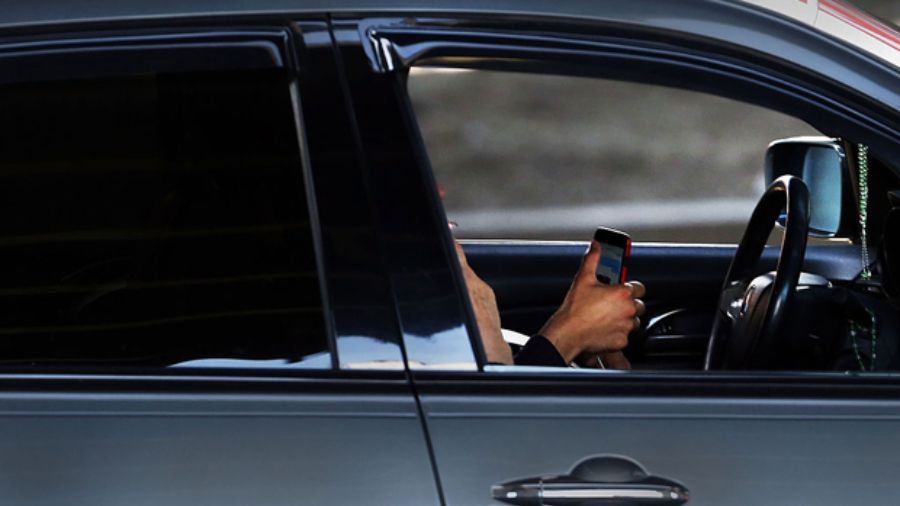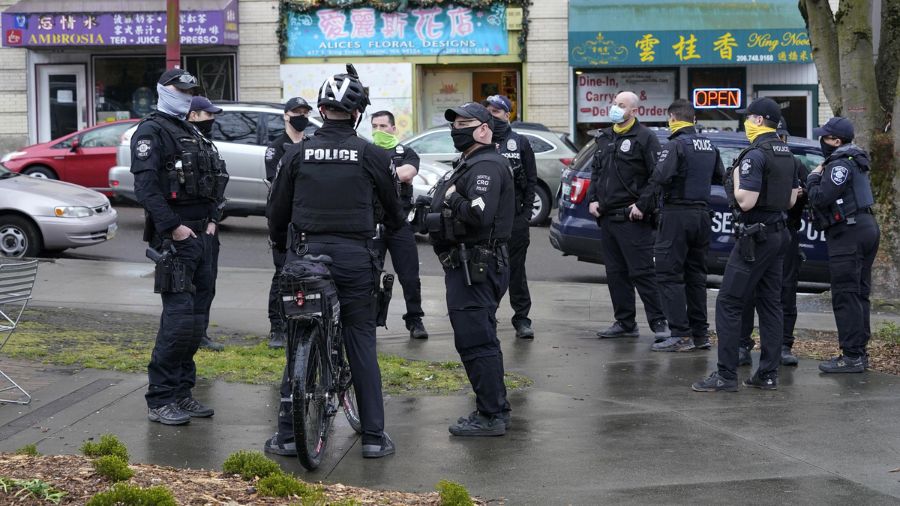WA Retail Association ‘greatly concerned’ over business restrictions
Nov 19, 2020, 5:01 AM | Updated: 10:42 am

Artwork painted on plywood covering a downtown Seattle business closed during the lockdown this past spring. (AP Photo/Elaine Thompson)
(AP Photo/Elaine Thompson)
The governor’s new restrictions on businesses are drawing questions and apprehension from the Washington Retail Association — especially where small businesses are concerned.
The restrictions, which went into effect Wednesday, limit retail to 25% capacity and ban indoor dining altogether. They also close movie theaters and fitness centers.
“We do need to keep people safe and we do need to be part of the solution,” Washington Retail Association President and CEO Renée Sunde said. However, she added, “this is a huge economic impact on many industries, and we have great concerns about the impact it is having.”
Sunde said the Retail Association had been meeting with the governor’s staff as part of the planning process for the new measures — but they had been advocating for the opposite of what ended up happening.
WA Hospitality Association: Restaurants are not the problem
“We had proposed, for a couple reasons, increasing capacity in stores to 50% from 30% … we had been talking to the governor’s staff about that, but obviously it was not included,” she said.
The logic behind opening up retail further, she explained, was that stores already have enforced masks and social distancing precautions in place, such as floor stickers and plexiglass barriers.
Furthermore, she explained, the retail experience by nature does not include standing in the same place spending time with people for long periods of time, which is known to potentially transmit the virus (though more so, of course, in situations where people are unmasked, such as parties).
“The transactions are not longstanding transactions, and so there’s quite a bit of movement throughout the store and less opportunity for the spread of the virus,” she said.
Another concern was that limiting occupancy in a shop could produce the very outcome the state is trying to protect against: crowding. She pointed to what the association has seen in malls when retail has been limited to 30% in the past few months.
“It was forcing people to be queued up in line outside of the store, in the mall common area, in order to wait to get into the store,” she said.
Sunde said the Washington Retail Association is especially worried about the financial implications the new rules could have on retailers — especially small businesses that have been hanging on by a thread throughout the pandemic months, and had been hoping for a prosperous holiday season.
The governor’s restrictions came with a promise to set aside $50 million in grants for small businesses specifically, but Sunde said that sum is a drop in the bucket.
“$50 million for retailers, and eateries, and bars that have had to close goes very fast,” Sunde said.
This past spring, when the governor allocated $10 million in grants for small businesses, a single retailer, restaurant, or service provider could receive up to $10,000. This time, if each business gets $10,000, that means just 5,000 businesses will receive help. In 2018, the U.S. Small Business Administration stated there were nearly 600,000 small businesses in Washington.
“There needs to be consideration about how this is impacting those small businesses,” Sunde said. “There needs to be a developed plan about how we’re going to financially support these businesses.”
Like Governor Inslee, Sunde also wants Congress to pass a relief package that could aid these mom-and-pop businesses.
Until that happens, however, Sunde said we all have an important role to play by doing our part to shop small this holiday season.
“All those years when small business folks give back to the community, they support causes, they support nonprofits — now is the time to be giving back to small businesses,” she said. “They need us.”
Businesses adapting creatively
Businesses are certainly getting creative as they try to bring in those holiday sales this year. Sunde said small entrepreneurs have been blending safety protocols with new techniques that shake up the traditional way of doing business.
Online ordering, curbside pickup, appointment shopping, and extending hours to spread out customers are all strategies being used to cut down on crowds while appealing to a wider variety of patrons.
Small businesses especially, which did not all have online platforms before the pandemic, used the lockdown to set up websites and social media to connect virtually with customers.
“They haven’t always been as sophisticated with their online platform, so COVID has been the fuel to the fire that has required that,” Sunde said. “Many small businesses have shown how innovative they could be.”
In a way, this was a silver lining, as it helped small businesses get used to a new digital world of commerce that had been a challenge long before the pandemic. Sunde said this mix of physical with digital sales will help small retailers better compete with large chains.
“If 2020 has proven anything, it’s that retailers are adaptable and resilient,” Sunde said.













